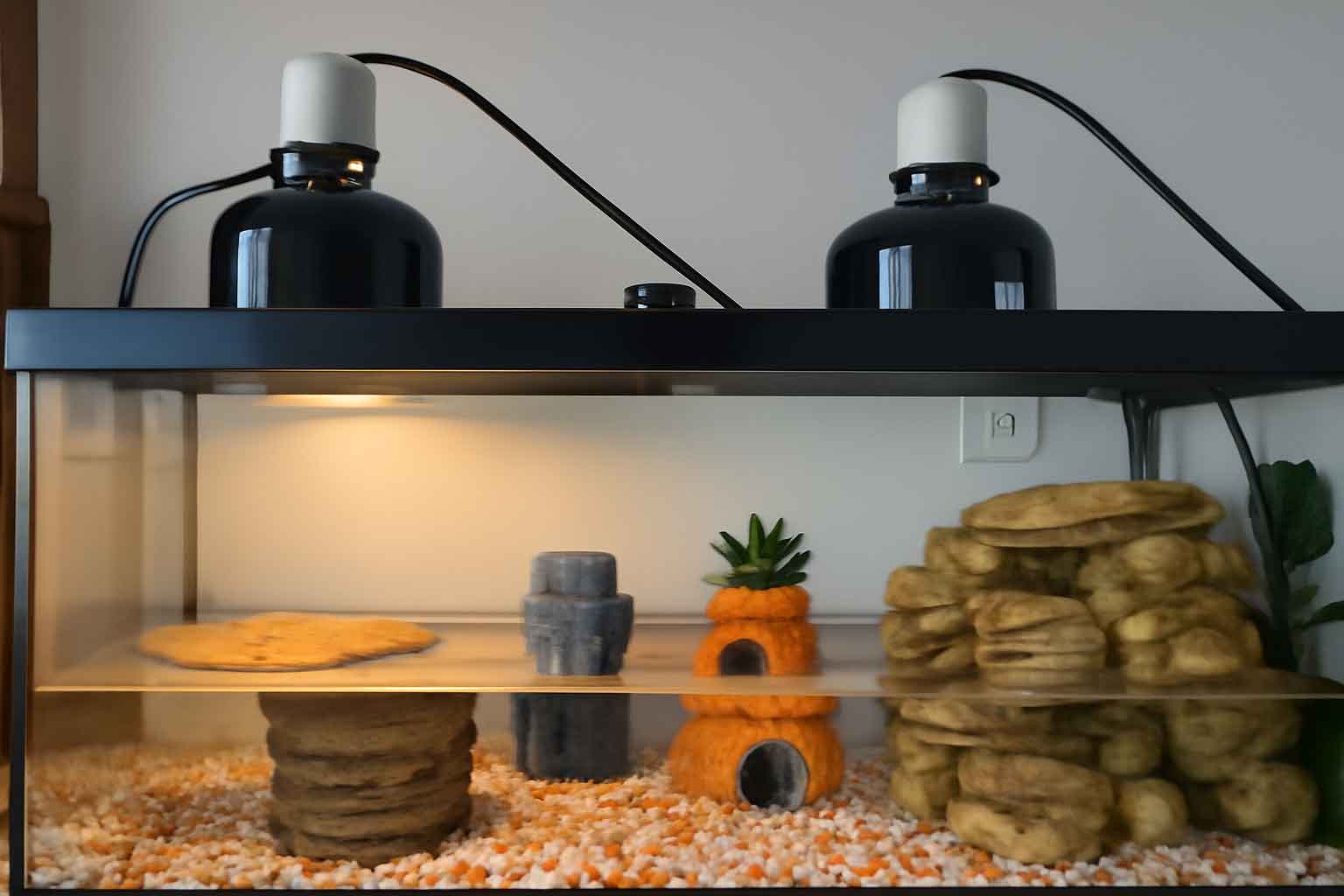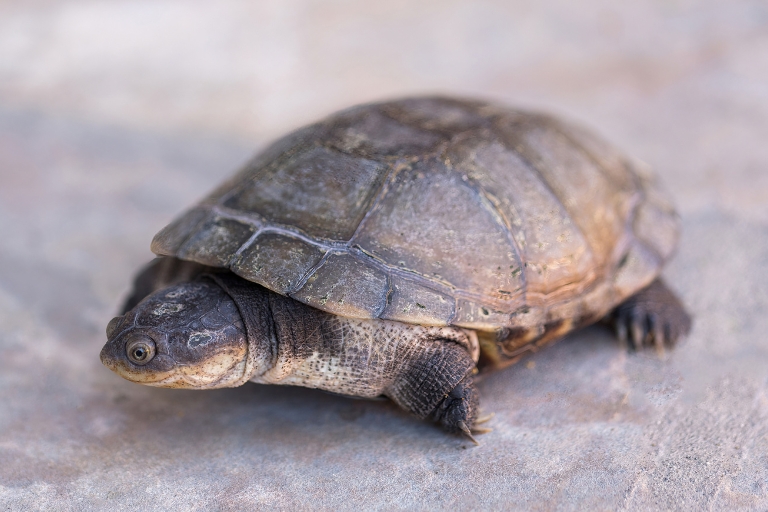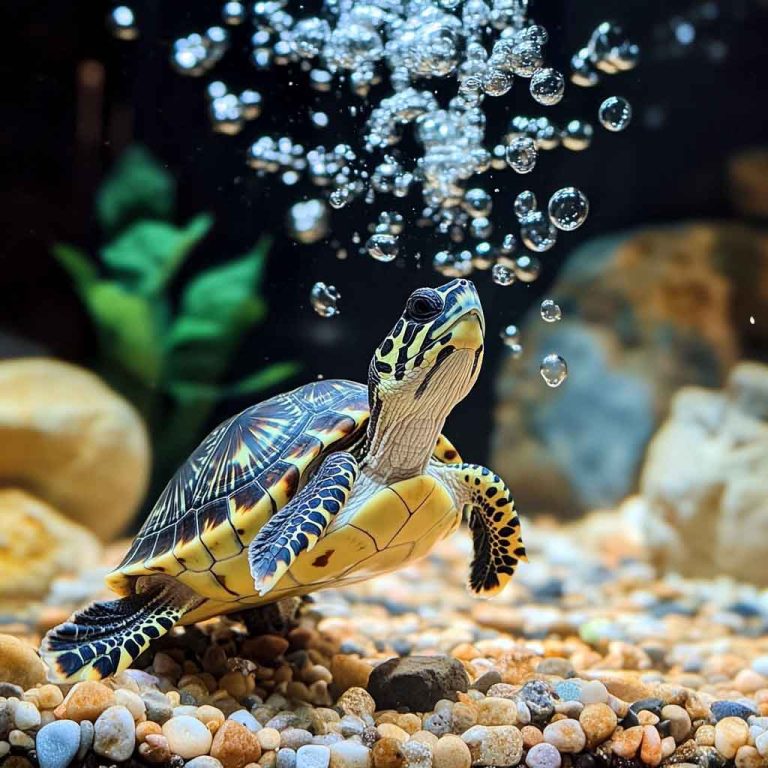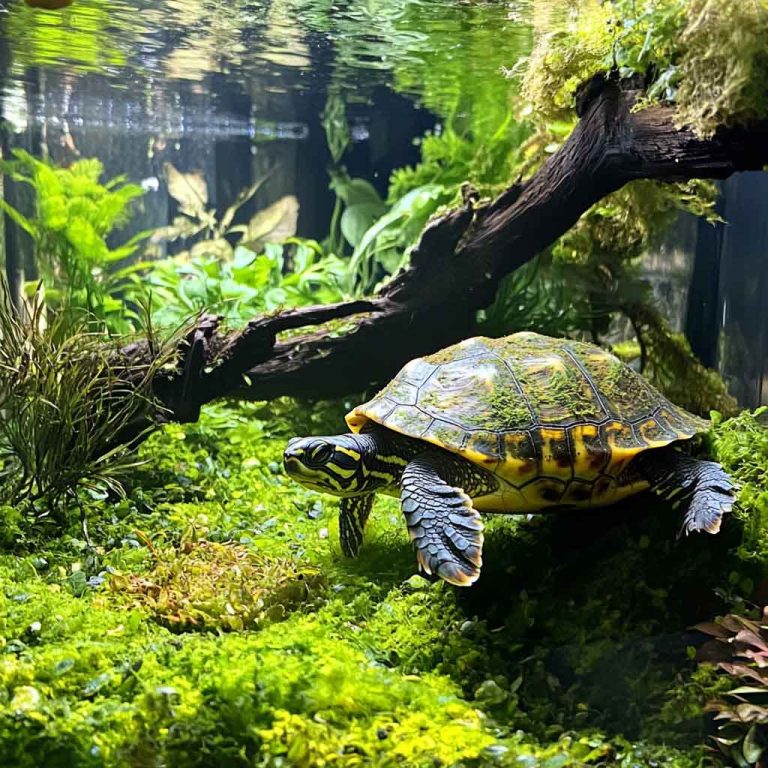Do Turtles Need a Heat Lamp at Night? Survival Tips
Turtles are fascinating pets, but their care requirements can raise questions, especially when it comes to their nighttime needs. One common concern among turtle owners is whether their pet needs a heat lamp at night and if they can survive without one. We’ve researched this topic thoroughly to provide you with a clear guide on…
Turtles are fascinating pets, but their care requirements can raise questions, especially when it comes to their nighttime needs. One common concern among turtle owners is whether their pet needs a heat lamp at night and if they can survive without one. We’ve researched this topic thoroughly to provide you with a clear guide on how to ensure your turtle stays healthy and comfortable after dark.
Do turtles need a heat lamp at night? Generally, turtles do not require a heat lamp at night if their enclosure maintains an appropriate ambient temperature, typically between 70-75°F (21-24°C) for most species. However, this depends on factors like the turtle’s species, age, and the surrounding environment. Without proper temperatures, turtles may face health risks, but they can survive short periods of cooler nights if conditions are managed.
This article explores whether your turtle needs a heat lamp at night, the factors that influence their nighttime care, and how to keep them thriving. Let’s dive into the details to help you make informed decisions for your shelled friend.
Do Turtles Need a Heat Lamp at Night?
Turtles are ectothermic, meaning their body temperature depends on their environment. During the day, they rely on heat sources like basking lamps to regulate their body temperature, which is essential for digestion, metabolism, and overall health. At night, however, their needs change since they are less active and don’t require basking.
For most turtle species, such as red-eared sliders or painted turtles, a heat lamp at night is unnecessary as long as the enclosure’s ambient temperature stays within a safe range (70-75°F or 21-24°C). If the temperature drops significantly below this, especially for prolonged periods, it can slow their metabolism, weaken their immune system, or even trigger brumation in some species. On the other hand, excessive heat at night can disrupt their natural day-night cycle, causing stress.
Several factors determine whether your turtle needs supplemental heat at night. Let’s break them down:
Factors Affecting Nighttime Heat Needs:
Turtle Species
Different turtle species have unique temperature requirements. Tropical species, like red-eared sliders, prefer warmer environments (75-80°F or 24-27°C), while temperate species, like box turtles, can tolerate slightly cooler nights (65-70°F or 18-21°C). Researching your turtle’s specific needs is crucial to determining if a heat lamp is necessary.
Age of the Turtle
Hatchlings and juvenile turtles are more sensitive to temperature fluctuations than adults. Their smaller bodies lose heat faster, and they have less energy reserves to cope with cold. For young turtles, maintaining stable nighttime temperatures is especially important to prevent health issues.
Room Temperature
The temperature of the room where your turtle’s enclosure is located plays a big role. If your home stays warm at night, you may not need a heat lamp. However, in colder climates or during winter, a supplemental heat source, like a ceramic heat emitter, might be needed to keep the enclosure within the safe range.

What Happens If Turtles Don’t Have a Heat Lamp at Night?
If nighttime temperatures in your turtle’s enclosure drop too low, it can lead to several health concerns. While turtles can survive cooler nights for short periods, prolonged exposure to inadequate temperatures may cause:
- Slowed Metabolism: Low temperatures reduce a turtle’s metabolic rate, impairing digestion and energy production. Over time, this can lead to lethargy and weight loss.
- Weakened Immune System: Cold stress can make turtles more susceptible to infections, such as respiratory illnesses, which are common in aquatic species.
- Brumation: Some turtles may enter a state of brumation (a reptile version of hibernation) if temperatures drop significantly. While natural for wild turtles, brumation can be risky for captive turtles if not properly managed.
- Shell and Skin Issues: In aquatic turtles, prolonged cold can increase the risk of shell rot or fungal infections, especially if the water temperature also drops.
Conversely, using a heat lamp at night when it’s not needed can be equally harmful. Bright lights can disrupt your turtle’s sleep cycle, leading to stress and behavioral changes. If supplemental heat is required, opt for non-light-emitting options like ceramic heat emitters or under-tank heaters to maintain warmth without disturbing their rest.
Alternatives to Heat Lamps for Nighttime
If your turtle’s enclosure gets too cold at night, there are several safe alternatives to using a traditional heat lamp:
- Ceramic Heat Emitters: These devices produce heat without light, making them ideal for nighttime use. They can be paired with a thermostat to maintain a consistent temperature.
- Under-Tank Heaters: These are placed beneath or on the side of the enclosure to gently warm the environment. They’re particularly useful for terrestrial turtles like box turtles.
- Heat Mats or Cables: For aquatic turtles, submersible heat mats or cables can keep the water at a stable temperature, indirectly warming the enclosure.
- Room Heating: If possible, keep the room where the turtle’s enclosure is located at a stable temperature using a space heater or central heating.
Always use a reliable thermometer to monitor the enclosure’s temperature and ensure it stays within the safe range for your turtle’s species.
How to Create the Ideal Nighttime Environment
To ensure your turtle thrives at night without relying on a heat lamp, consider these tips:
- Know Your Turtle’s Needs: Research the specific temperature requirements for your turtle’s species. For example, red-eared sliders need water temperatures of 74-78°F (23-26°C) and an ambient air temperature of 70-75°F (21-24°C) at night.
- Use a Thermostat: A thermostat can regulate any heating device to prevent overheating or temperature drops, creating a stable environment.
- Provide Proper Insulation: For terrestrial turtles, ensure the enclosure has adequate substrate (e.g., coconut coir or soil) to retain warmth. For aquatic turtles, a well-insulated tank can help maintain water temperature.
- Monitor Water Temperature: For aquatic species, use a submersible aquarium heater to keep the water at the right temperature, as cold water can be more harmful than cold air.
- Avoid Drafts: Place the enclosure in a draft-free area to prevent sudden temperature drops.
By maintaining the right conditions, you can help your turtle stay healthy and comfortable through the night without the need for a heat lamp in most cases.
FAQs
1. Can turtles survive without a heat lamp at night?
Yes, turtles can survive without a heat lamp at night if the enclosure’s ambient temperature stays within their species’ safe range (typically 70-75°F or 21-24°C). However, prolonged exposure to colder temperatures can lead to health issues like slowed metabolism or infections.
2. What should I do if my turtle’s enclosure gets too cold at night?
If the enclosure drops below the safe temperature range, consider using a ceramic heat emitter, under-tank heater, or submersible aquarium heater. Monitor temperatures with a thermometer and use a thermostat to maintain consistency.
3. Do baby turtles need a heat lamp at night?
Baby turtles are more sensitive to cold than adults, so they may need supplemental heat at night if the enclosure’s temperature falls below 70°F (21°C). Use a non-light-emitting heat source to avoid disrupting their sleep.
4. Can a heat lamp stay on 24/7?
No, leaving a heat lamp on 24/7 is not recommended. Constant light can disrupt your turtle’s day-night cycle, causing stress. If heat is needed at night, use a ceramic heat emitter or another non-light-emitting device.
Final Word
Turtles generally do not need a heat lamp at night if their enclosure maintains a safe ambient temperature, typically between 70-75°F (21-24°C) for most species. Factors like the turtle’s species, age, and room temperature play a significant role in determining whether supplemental heat is necessary. While turtles can survive short periods of cooler nights, prolonged exposure to low temperatures can lead to health problems like slowed metabolism, weakened immunity, or shell issues.
To keep your turtle thriving, monitor their enclosure’s temperature, use non-light-emitting heat sources if needed, and tailor their environment to their specific needs. By providing the right nighttime conditions, you can ensure your turtle stays healthy, comfortable, and happy without the risks of improper heating.







